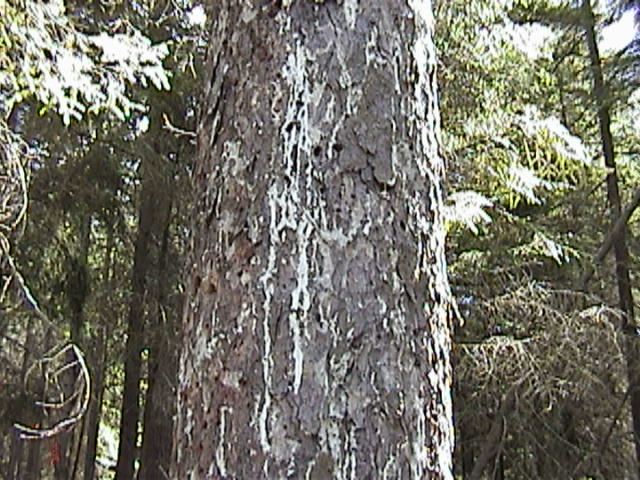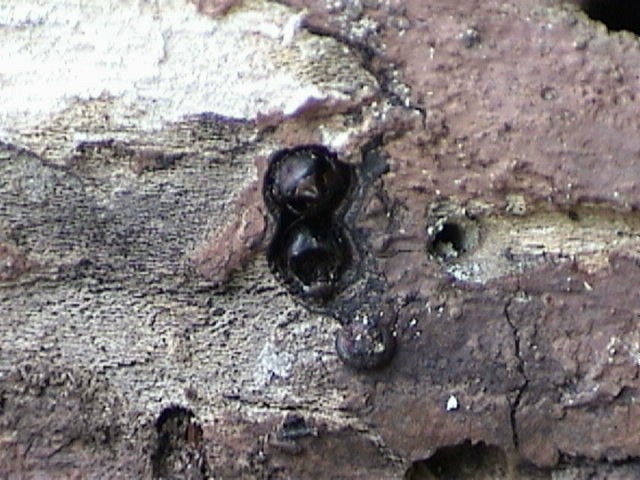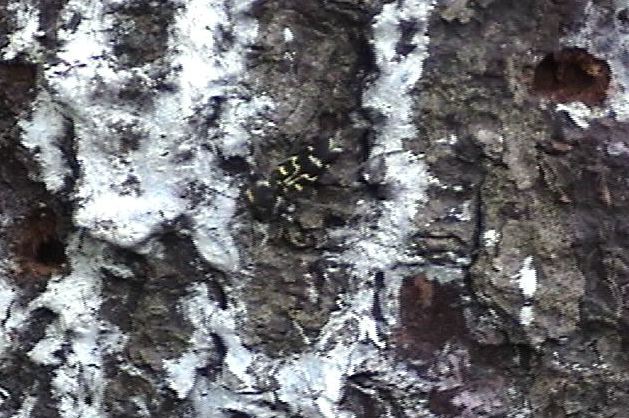Reproduced from the Dalhousie University online Journal, Biotype. July, 2001.
A Scientific Sidebar
by Christopher Majka
Publications by the CFIA, the CFS and the NS Dept. of Natural Resources [1] repeatedly give the following indicators as "Signs of attack (of BSLB) on trees:"
In fact, it is primarily the first two criteria that have been used as 'diagnostics' by the agencies since examining feeding tunnels involves stripping the bark from living trees.
Point # 1: Excessive resin production can be caused by any combination of the circa 35 wood- and bark-boring insects know to be found in the Park.
Point # 2: Ill spruces typically exhibited bore-holes of more than one size and shape (the smaller ones indicating the presence of scolytids; the larger ones, perhaps the presence of siricids and/or large bupestrids). However, in terms of exit bore-holes of the circa 4 mm size (excluding those insects which are too small or too large, or feed on other hosts) all of eight of the following beetles (found in PPP) make exit bore-holes within the right size range:
No one has shown a method of distinguishing the exit bore-holes of T. fuscum from any of the other species. Despite this fundisputed fact, the agencies and their spokespeople have steadfastly refused to recognize this and have repeatedly equated the presence of exit bore-holes with BSLB.
[1] NS Dept of Natural Resources, Information Leaflet No. IPM-6. 2000; CFIA Pest Fact Sheet; CFS "Facts about the Brown spruce longhorn beetle in Halifax.

Resin flows on an affected tree.

Exit burrows on a Red Spruce tree.
Species
size (mm)
host plants
Tetropium fuscum
8-17
spruce, fir, pine, larch, hardwoods
Tetropium cinnamopterum
9-14
conifers esp. larch
Asemum striatum
10-16
many conifers
Rhagium inquisitor
11-18
many conifers
Xylotrechus undulatus
11-21
conifers & hardwoods
Evodinus monticola
8-13
conifers
Cosmosalia chrysochoma
10-20
conifers & hardwoods
Melanophila fulvoguttata
9-12
pine, spruce, hemlock

The Rustic Borer, Xylotrechus undulatus.